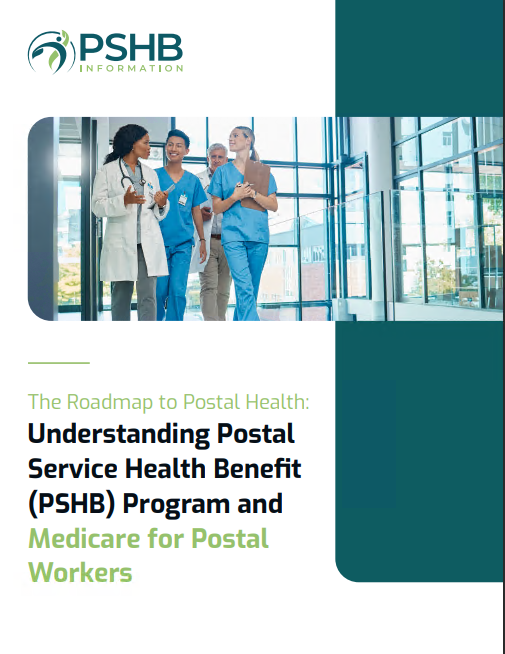Key Takeaways:
-
Deductibles significantly influence your overall healthcare costs and how quickly your plan starts covering your expenses.
-
Understanding deductibles helps you make informed choices and avoid surprises when using your Postal Service Health Benefits (PSHB) plan.
What Exactly Is a Deductible?
If you’ve ever browsed through health plans, you’ve likely seen the word “deductible” tossed around. A deductible is the amount you pay out of your own pocket for healthcare services before your plan starts sharing costs. For example, if your deductible is $1,500, you’ll need to pay for $1,500 worth of services before your PSHB plan kicks in with its share.
It’s easy to glance over deductibles when comparing plans. You might focus more on premiums or copayments. But neglecting the deductible could mean facing unexpected expenses later. Let’s break down why they matter so much.
Deductibles: The Foundation of Your Health Plan
Balancing Deductibles and Premiums
Deductibles and premiums often have an inverse relationship. Plans with lower premiums usually have higher deductibles, while higher-premium plans may offer lower deductibles. If you’re relatively healthy and don’t expect many medical visits, a higher deductible plan could make sense for saving on premiums. However, if you anticipate regular doctor visits or need medications, a lower deductible might be more cost-effective.
How Deductibles Affect Out-of-Pocket Costs
Deductibles are just one part of your total out-of-pocket costs, which also include copayments, coinsurance, and your plan’s maximum out-of-pocket limit. With PSHB plans, understanding how these elements work together can help you estimate what you’ll pay in a year. For instance, reaching your deductible doesn’t mean you’re done paying—you may still owe copayments or coinsurance.
Understanding Deductible Timelines
Annual Reset
Most deductibles reset every year, usually on January 1. That means whatever you’ve paid toward your deductible in one year doesn’t carry over into the next. If you’re near the end of the year and haven’t met your deductible, you might delay non-urgent care until January to ensure your expenses apply to the new year’s deductible.
Tracking Progress
Your PSHB plan provides tools to help you track how much you’ve paid toward your deductible. Staying informed ensures you’re not caught off guard by unexpected bills.
High vs. Low Deductibles: What Fits Your Needs?
Low Deductible Plans
These plans might be ideal if you:
-
Visit healthcare providers frequently.
-
Manage chronic conditions requiring regular care.
-
Prefer predictable costs when accessing services.
A lower deductible reduces the amount you need to pay before your plan starts contributing, giving you peace of mind if healthcare is a regular part of your life.
High Deductible Plans
High-deductible plans are often better suited for:
-
People in good health who rarely visit the doctor.
-
Those who want to pair their plan with a Health Savings Account (HSA) for tax benefits.
-
Individuals comfortable taking on more financial risk in exchange for lower premiums.
Navigating PSHB Deductibles
In-Network vs. Out-of-Network Costs
Most PSHB plans feature separate deductibles for in-network and out-of-network providers. In-network deductibles are usually lower, as these providers have agreements with your plan. Out-of-network deductibles, on the other hand, can be significantly higher and may leave you paying more out-of-pocket.
Family vs. Individual Deductibles
If you’re on a Self Plus One or Self and Family plan, you’ll need to understand how family deductibles work. Many plans have two types:
-
Individual Deductible: Each family member’s expenses count toward their own deductible.
-
Family Deductible: The combined expenses of all family members contribute to a shared deductible limit. Once it’s met, the plan begins covering costs for everyone.
Deductibles in Context: Out-of-Pocket Maximums
While deductibles determine when your plan starts sharing costs, the out-of-pocket maximum caps your total expenses for the year. Once you’ve reached this limit, your plan covers 100% of covered services for the remainder of the year. Knowing both figures can give you a clear picture of your potential financial responsibility.
Tips for Managing Deductibles Effectively
Know Your Benefits
Take time to review your PSHB plan’s benefits. Some services, like preventive care, might be covered before you meet your deductible. Understanding these details ensures you’re not paying for services your plan already covers.
Plan for the Unexpected
Life happens, and medical costs can arise when you least expect them. Consider setting aside funds to cover your deductible, especially if you’ve chosen a high-deductible plan. An emergency fund can help you avoid financial strain during unexpected medical events.
Leverage Preventive Care
Most PSHB plans cover preventive care, such as annual check-ups and screenings, at no additional cost. Utilizing these services not only keeps you healthy but also helps you avoid more significant medical expenses later.
Use In-Network Providers
Sticking to in-network providers helps you save on out-of-pocket costs and reach your deductible more quickly. Out-of-network services can be much more expensive and might not count toward your in-network deductible.
The Role of Deductibles in Choosing Your PSHB Plan
When selecting a PSHB plan, consider your health needs, financial situation, and risk tolerance. A thorough understanding of deductibles and their impact on your overall costs ensures you’re making a well-informed decision. Remember, it’s not just about the lowest premium or copayment but how all the plan’s features work together.
Making Smart Decisions with PSHB Plans
Your Postal Service Health Benefits plan is a vital resource for managing healthcare costs, and deductibles play a pivotal role in how those costs are structured. By taking the time to understand your deductible and how it fits into your overall financial picture, you can make choices that align with your needs and minimize unexpected expenses.







